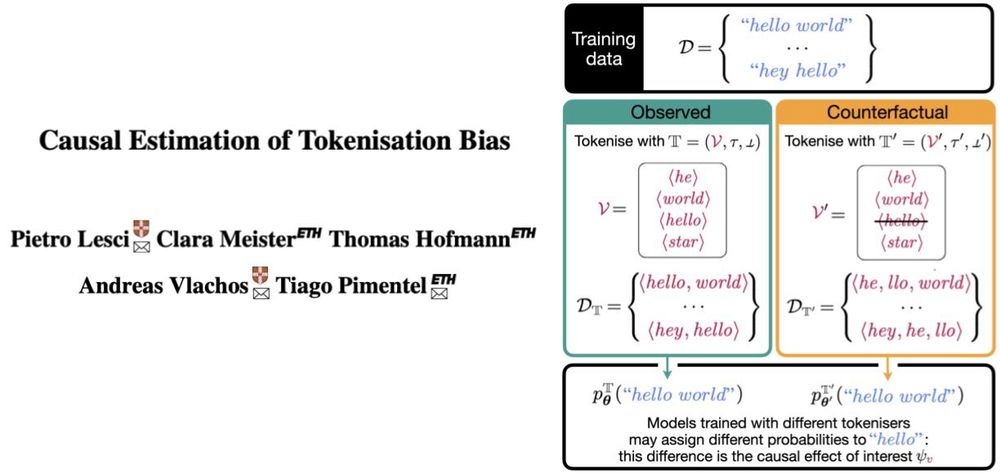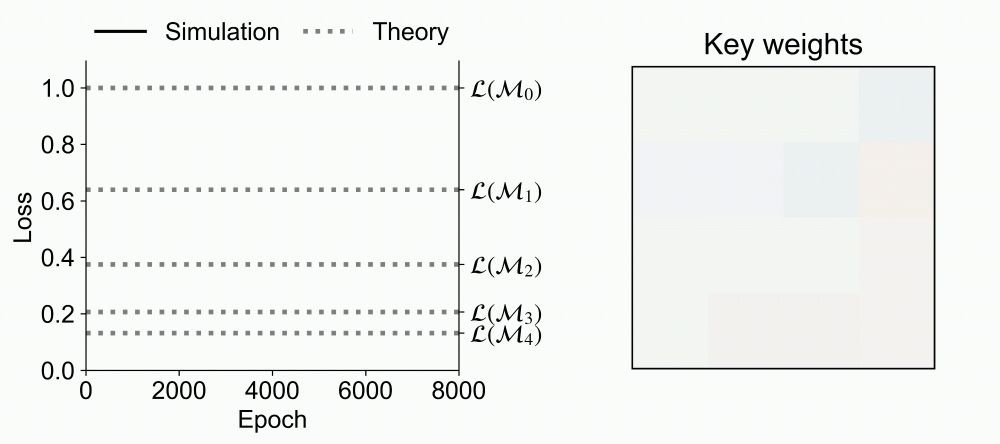ICML 2025 AwardsICML 2025
Congratulations to CSD faculty Aditi Raghunathan and her research collaborators on receiving an ICML Outstanding Paper award for Roll the dice & look before you leap: Going beyond the creative limits of next-token prediction (icml.cc/virtual/2025...).
Paper: arxiv.org/abs/2504.15266
17.07.2025 14:43 — 👍 5 🔁 1 💬 0 📌 1
Reading the dedications of a PhD thesis is often a cure for a bad day. There’s so much affection in them
03.07.2025 23:05 — 👍 43 🔁 1 💬 4 📌 0
LLM Policy
As NeurIPS review deadline is around the corner, please remember that you cannot use any non-local LLM like chatgpt/gemini for understanding the paper and drafting/revising your review as that breaks the confidentiality agreement.
NeurIPS 2025 Official LLM Policy:
neurips.cc/Conferences/...
02.07.2025 12:44 — 👍 6 🔁 1 💬 0 📌 0
I really enjoyed "When We Cease to Understand the World", although it's more fiction than history of science
22.06.2025 14:30 — 👍 2 🔁 1 💬 0 📌 0
“Science in history” by Bernal is my first recommendation. The work of Ian Hacking is a good recommendation for
Probability
23.06.2025 02:12 — 👍 1 🔁 1 💬 0 📌 0
When we are doing science, we are unknowingly executing our mythology, taken from movies and friends and textbooks, of what science is. History of science helps us ground that myth in reality
21.06.2025 23:04 — 👍 53 🔁 6 💬 3 📌 0
I finally wrote a full-fledged blog about this: reading the history of science is an **amazing** yet under-recognized way to develop (emotional) maturity as a researcher.
If you have thoughts/recommendations, please share!
vaishnavh.github.io/2025/04/29/h...
12.06.2025 23:45 — 👍 35 🔁 7 💬 3 📌 2
haha that's a new idiom for me. it's perfect! and the flip side is, "target and (potentially) regret", which causes quite a lot of stress. (what if your work gets rejected by the community or worse, overlooked)
05.06.2025 15:58 — 👍 2 🔁 0 💬 1 📌 0
but these pressures are real and have always persisted.
</end rant>
I think @abeirami.bsky.social may be interested in this rant.
05.06.2025 15:43 — 👍 2 🔁 0 💬 1 📌 0
but now I've the maturity to seek validation from things like "a specific person complimenting my work" or even better, "a meaningful citation where someone substantially builds on my work." (ofc, i also seek internal validation/satisfaction but I gotta be realistic, lol).
05.06.2025 15:43 — 👍 1 🔁 0 💬 0 📌 0
i had intense first-hand struggle with a lot of these effects in my phd since i had <= 1 paper/year for the most part. i started managing it only after getting visibly recognized by experts for one of my papers at one point. i still struggle with it at some level.
05.06.2025 15:43 — 👍 1 🔁 0 💬 1 📌 0
then there are many other insidious feedback cycles like the fact that publishing more => more visibility => more opportunities/networks/interfaces with the community/more citations => more opportunities/internships etc., => more papers
05.06.2025 15:37 — 👍 3 🔁 0 💬 2 📌 0
for example, with the advent of twitter, there's a pressure to stay constantly visible and to have many different things to say every now and then (bec everyone else is doing that), rather than pitch your one paper again and again which starts feeling awkward :-(
05.06.2025 15:33 — 👍 4 🔁 0 💬 1 📌 0
someday I hope to write a blog about "all the other forces that discourage me" from publishing less. people always say "publish less!" but without acknowledging these varied and nuanced forces
05.06.2025 15:33 — 👍 4 🔁 0 💬 1 📌 0
all other incentivation strategies I had thought of are much more negative/mean. like
- "evaluating someone based on some bottom k papers" or
- "judging negatively for publishing >N papers"
05.06.2025 15:30 — 👍 3 🔁 0 💬 1 📌 0
haha thank you! honored you feel that way!
btw, i just noticed this, this sort of a compliment is actually a great way to incentivize people to be more selective in publishing papers (and to counter all the other forces that discourage me from my rate of ~1 paper a year)
05.06.2025 15:28 — 👍 4 🔁 0 💬 2 📌 1

Title of paper "Causal Estimation of Tokenisation Bias" and schematic of how we define tokenisation bias, which is the causal effect we are interested in.
A string may get 17 times less probability if tokenised as two symbols (e.g., ⟨he, llo⟩) than as one (e.g., ⟨hello⟩)—by an LM trained from scratch in each situation! Our new ACL paper proposes an observational method to estimate this causal effect! Longer thread soon!
04.06.2025 10:51 — 👍 53 🔁 9 💬 1 📌 3

How does in-context learning emerge in attention models during gradient descent training?
Sharing our new Spotlight paper @icmlconf.bsky.social: Training Dynamics of In-Context Learning in Linear Attention
arxiv.org/abs/2501.16265
Led by Yedi Zhang with @aaditya6284.bsky.social and Peter Latham
04.06.2025 11:22 — 👍 52 🔁 17 💬 1 📌 1
This paper is quite nice. It mixes some useful toy models of creativity with insights about how to induce more creativity in LLMs that are better than greedy sampling
02.06.2025 21:31 — 👍 16 🔁 4 💬 1 📌 1
But, there's a lot of scope for exciting work:
→ generalizing these insights to real cows,
→ studying RL/CoT for creativity,
→ understanding surprising behaviors of seed-conditioning 10/👇🏽
02.06.2025 17:25 — 👍 0 🔁 0 💬 1 📌 0
Of course, this is all a study of spherical cows. 🐮
Given the noisy, subjective studies of real cows, we believe an objective study brings
→much-needed clarity of thought (like disentangling the two modes of creativity),
→more ideas,
→better-defined experiments. 9/👇🏽
02.06.2025 17:25 — 👍 0 🔁 0 💬 1 📌 0

Our vision is that seed-conditioning can help models sample a latent thought and articulate that one thought into words,
but temp sampling has to articulate multiple latent thoughts in parallel to produce a marginal next-word distribution -- this is more burdensome! 8/👇🏽
02.06.2025 17:25 — 👍 1 🔁 0 💬 1 📌 0

Figure showing algorithmic creativity with and without seed-conditioning.

Next, we revisit how to produce randomness: the go-to temp sampling 🌡️ vs. injecting a random prefix (seed-conditioning). 🌱
Remarkably, seed-conditioning produces meaningful diversity even w *greedy* decoding 🤑; it is competitive with temp & in some conditions, superior. 7/👇🏽
02.06.2025 17:25 — 👍 1 🔁 0 💬 1 📌 0
…a (deterministic) many-hop planning task.
our work shows inefficiency in tasks
- as simple as 2-hop (stochastic) planning 👶🏽
- where no token-reordering is next-token friendly! 🔀🔃🙅🏾 The model *must* learn all tokens in tandem to detect an *implicit* pattern. 6/👇🏽
02.06.2025 17:25 — 👍 0 🔁 0 💬 1 📌 0

Figure from prior paper showing path-star task, a pitfall of next-token prediction.
02.06.2025 17:25 — 👍 0 🔁 0 💬 1 📌 0
We argue: creativity requires appreciating big-picture 🖼️ patterns & orchestrating interdependent random decisions in advance ("a leap of thought"). Next-token learning should be inefficient at this.
This complements the known pitfall of next-token learning in the path-star task … 5/👇🏽
02.06.2025 17:25 — 👍 1 🔁 0 💬 1 📌 0

Plots report empirical results of algorithmic creativity under next-token vs multi-token objectives.

On these tasks, we can objectively evaluate how “creative” (correct, diverse & original) a model is. 🧑🏽🔬
First: Next-token-trained models are largely less creative & memorize much more than multi-token ones (we tried diffusion and teacherless training). 4/👇🏽
02.06.2025 17:25 — 👍 1 🔁 0 💬 1 📌 0

Fig 1 screenshot from paper describing minimal algorithmic tasks for combinational creativity (drawing upon different pieces of memory.)

Minimal algorithmic tasks describing exploratory creativity (devising fresh patterns subject to some rules.) Screenshot of Fig 2 in the paper.

Screenshot from poster describing the two tasks in a less technical way.
Our idea was to design minimal, open-ended, graph algorithmic tasks 🧮 abstracting 2 key modes of creativity:
1. Combinational: making surprising connections from memory, like in wordplay.🧠
2. Exploratory: devising fresh patterns obeying some rules, like in problem-design🧩 3/👇🏽
02.06.2025 17:25 — 👍 0 🔁 0 💬 1 📌 0
Assistant Professor @ SFU MBB | Systems Biology of Host-Pathogen | Vaccinology | Neonatal Sepsis | Pathogen Genomics | Loves data, food & art.
Ramen whisperer, bad throat singer
The 2025 Conference on Language Modeling will take place at the Palais des Congrès in Montreal, Canada from October 7-10, 2025
#Engineer, #anarchist, husband, #GenX, ex- #goth, #dog owner, #cat owned
Focused on #Covid19, #ClimateChange, hybrid #nuclear energy
My meager #writing: http://ciar.org/ttk/orcish_opera
I also like #birds (mainly corvidae). #corvid #cawmunity
PhD Student @ Cornell CIS
Bluesky paper digest: https://bsky.app/profile/paper-feed.bsky.social/feed/preprintdigest
Google Chief Scientist, Gemini Lead. Opinions stated here are my own, not those of Google. Gemini, TensorFlow, MapReduce, Bigtable, Spanner, ML things, ...
Researcher in ML and Privacy.
PhD @UofT & @VectorInst. previously Research Intern @Google and @ServiceNowRSRCH
https://mhaghifam.github.io/mahdihaghifam/
PhD student @uwnlp.bsky.social
See(k)ing the surreal
Causal World Models for Curious Robots @ University of Tübingen/Max Planck Institute for Intelligent Systems 🇩🇪
#reinforcementlearning #robotics #causality #meditation #vegan
AI Reasoning and Foundations
Senior Research Scientist, Google |
PhD, Princeton University
The world's leading venue for collaborative research in theoretical computer science. Follow us at http://YouTube.com/SimonsInstitute.
Assistant Prof in ML @ KTH 🇸🇪.
Previous: Aalto University 🇫🇮, TU Graz 🇦🇹, originally from 🇩🇪.
Doing: Reliable ML | uncertainty stuff | Bayesian stats | probabilistic circuits
https://trappmartin.github.io/
Interests on bsky: ML research, applied math, and general mathematical and engineering miscellany. Also: Uncertainty, symmetry in ML, reliable deployment; applications in LLMs, computational chemistry/physics, and healthcare.
https://shubhendu-trivedi.org
Cosmologist, pilot, author, connoisseur of cosmic catastrophes. TEDFellow, CIFAR Azrieli Global Scholar. Domain verified through my personal astrokatie.com website. She/her. Dr.
Personal account; not speaking for employer or anyone else.
For professional, see https://cvoelcker.de
If I seem very angry, check if I have been watered in the last 24 hours.
Now 🇺🇸 flavoured, previously available in 🇨🇦 and 🇩🇪
Ithaca | prev Chicago | interested in interconnected systems and humans+computers | past and future: academic and industry research | currently: gardening
Assistant Professor at UMD College Park| Past: JPMorgan, CMU, IBM Research, Dataminr, IIT KGP
| Trustworthy ML, Interpretability, Fairness, Information Theory, Optimization, Stat ML











